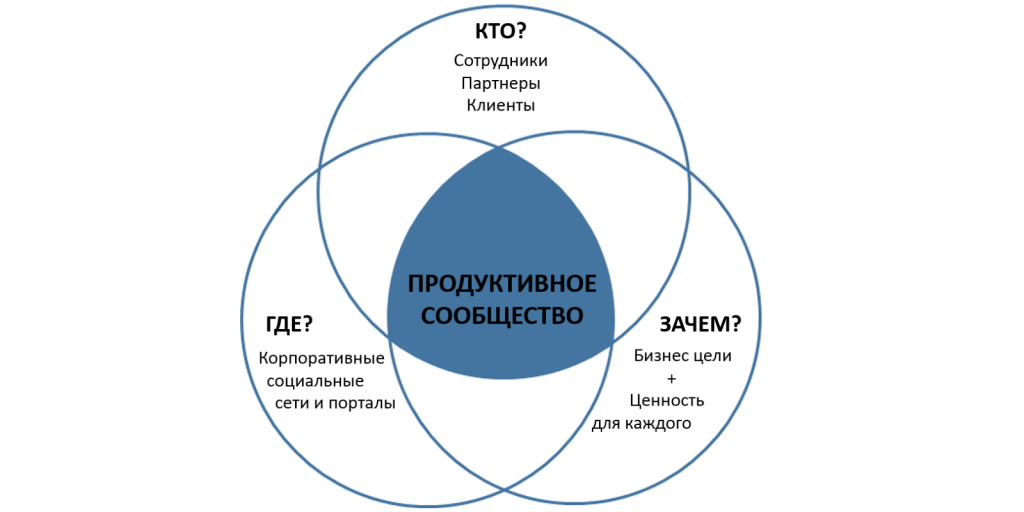Is a corporate social network “what” or “where”?
Positioning yourself as an implementer of corporate social networks can lead to misperceptions, because this is not about SMM and not about technologies, but about productive communities that benefit the organization and each employee.

“- Uh! - protested Muskrat. “Please immediately conjure the book back to me!”
- You can’t do it back! - said the Wizard. - But you will get a new book! Please!
“About the need for all things,” Muskrat read. “But this is not the same book at all!” In my interpretation of the futility of all things.
However, the Wizard only burst out laughing. ”
Tove Jansson, The Wizard's Hat.
All! I stopped telling people that I’m introducing corporate social networks. Because when they hear about it, the word “corporate” is discarded and a strong connection “social network” is triggered. And quite often at the same moment the interlocutor begins to talk about his relationship with Facebook. And our conversation from the field of utility from the unification of people goes into the discussion of the futility of unifying people. Just like in the favorite book of the Muskrat.
This is one part of the trouble. The second part is that the terms “corporate portal” or “corporate social network” are usually perceived as technology. And this is not technology, this is an online platform on which for some reason people gather. Moreover, the introduction of technology and the creation of a site are not the ultimate goal, it is only a means. The goal is to use energy from bringing people together.
We call it the Productive Community.

It consists of four components.
So now we are building and developing Productive Communities. And our main task is to make people understand, accept and apply new ways of teamwork in the community, and it creates a business benefit for the organization.
Vladimir Ivanitsa Facebook | LinkedIn

“- Uh! - protested Muskrat. “Please immediately conjure the book back to me!”
- You can’t do it back! - said the Wizard. - But you will get a new book! Please!
“About the need for all things,” Muskrat read. “But this is not the same book at all!” In my interpretation of the futility of all things.
However, the Wizard only burst out laughing. ”
Tove Jansson, The Wizard's Hat.
All! I stopped telling people that I’m introducing corporate social networks. Because when they hear about it, the word “corporate” is discarded and a strong connection “social network” is triggered. And quite often at the same moment the interlocutor begins to talk about his relationship with Facebook. And our conversation from the field of utility from the unification of people goes into the discussion of the futility of unifying people. Just like in the favorite book of the Muskrat.
This is one part of the trouble. The second part is that the terms “corporate portal” or “corporate social network” are usually perceived as technology. And this is not technology, this is an online platform on which for some reason people gather. Moreover, the introduction of technology and the creation of a site are not the ultimate goal, it is only a means. The goal is to use energy from bringing people together.
We call it the Productive Community.

It consists of four components.
- People. The first and most important component. If you are building an internal corporate community, these are your leaders, mid-level managers, ordinary employees, remote employees, production workers, and so on. If you think that your organization is more than its staff, then your partners and clients enter the community.
- Goal. Since we are not talking about public communities, but corporate ones, the goal should satisfy both subjects of corporate communications - a person and an organization. Therefore, the goal should be formulated both for the organization and for each community member.
- A place. This is where an online platform appears that can unite people in a way that could not be done by conventional means - business trips, phone calls, conference rooms, meeting rooms. As a platform are corporate portals and corporate social networks.
- The first three components form an online community. We call it a Productive Community if
- the organization benefits from the online community and;
- people in the community benefit more than they personally bring to the community.
So now we are building and developing Productive Communities. And our main task is to make people understand, accept and apply new ways of teamwork in the community, and it creates a business benefit for the organization.
Vladimir Ivanitsa Facebook | LinkedIn
